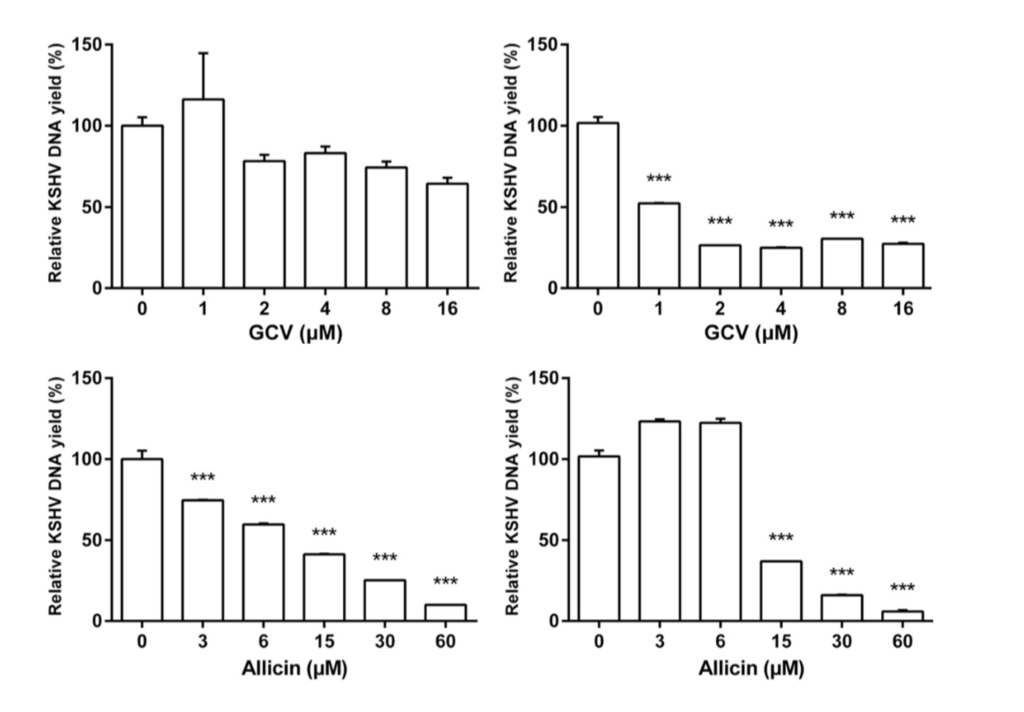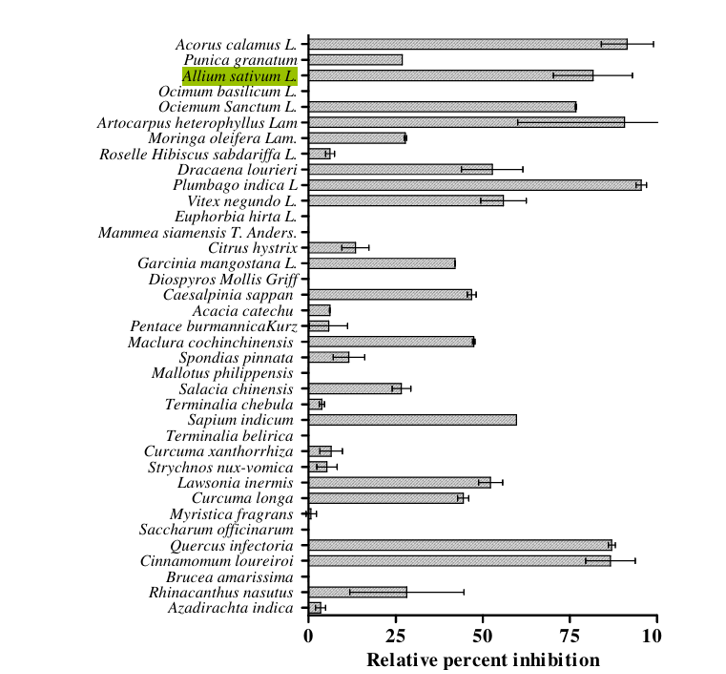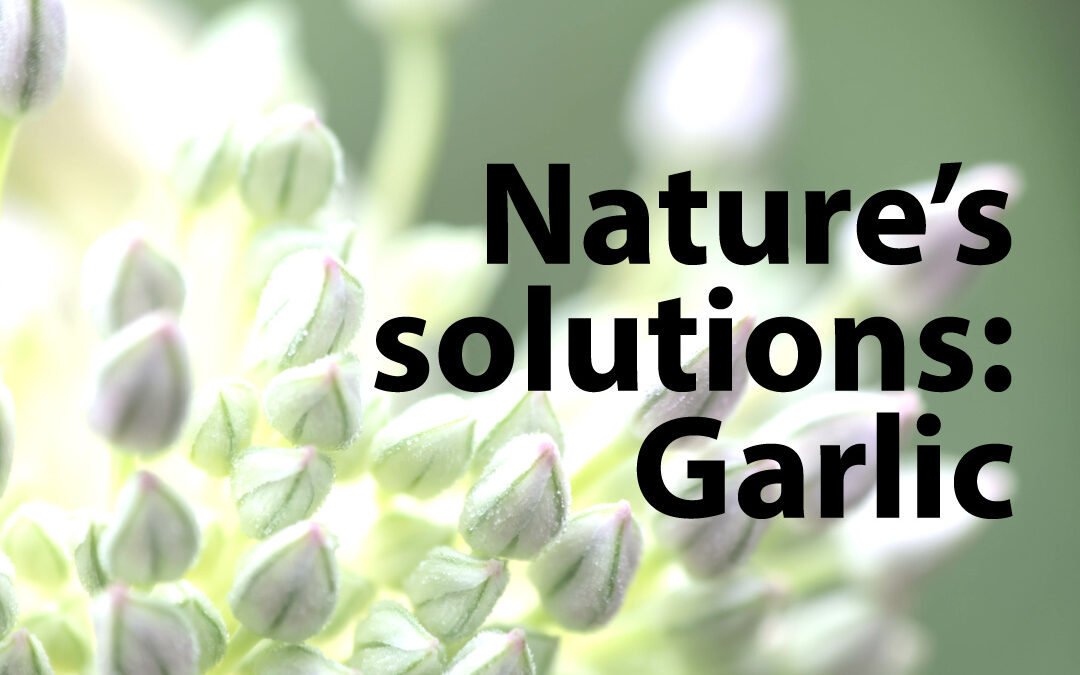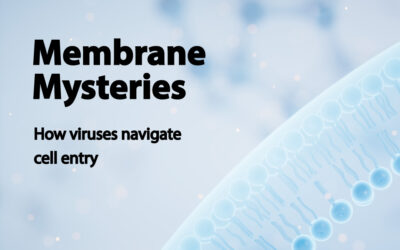“For, let me tell you, he is known everywhere that men have been as a thing that is not of God… garlic is a charm; it is amongst the best things we have.” — Professor Van Helsing, in Bram Stoker’s Dracula
Garlic keeps vampires at bay, and there’s truth in these old myths. But it’s 2024, and we should be leveraging garlic’s natural products in our modern health strategies. Therefore, it’s time we take a closer look at garlic’s antiviral properties and the roles it could play.
Below, we dip into the literature on garlic as an antiviral. This isn’t a comprehensive review, but just a clove of knowledge to give you a flavor of the work done.
A 1990s study finds that garlic compounds are antiviral
A 1992 study (Weber et al.) tested various garlic-derived compounds against viruses like herpes simplex (HSV) and rhinovirus. The authors report that ajoene and allicin were the most potent, showing strong virucidal activity, while alliin and diallyl disulfide were inactive. Ajoene (found in oil-macerated garlic but not fresh extracts) was the most effective, followed closely by allicin (the main thiosulfinate in fresh garlic). Alliin, a precursor to allicin, and diallyl disulfide, a sulfur compound, showed no antiviral effects. Commercial garlic products varied in efficacy, with those high in allicin performing best.
Garlic shows promise against HSV-1, but dosage matters
A 2006 study (Razavi et al.) published in Medicine investigated the antiviral properties of garlic against herpes simplex virus Type 1 (HSV-1), which causes oral infections like cold sores. Hela cell cultures were used to assess the effects of garlic extracts (both aqueous and alcoholic) on HSV-1. Garlic extracts had a significant antiviral effect, with the doses required to inhibit the virus being lower than those causing cell toxicity. Because of these findings, the authors suggest that garlic could be a potential antiviral treatment for HSV-1, though higher doses pose risks of toxicity.
Allicin and Kaposi sarcoma-associated herpesvirus
Kaposi sarcoma-associated herpesvirus (KSHV) is responsible for Kaposi sarcoma, a skin cancer commonly seen in AIDS patients. While current treatments target the virus in its active, or lytic, phase, they don’t address the latent phase, which plays a crucial role in tumor growth.
In 2020, researchers from Zhejiang University investigated allicin’s ability to combat KSHV. Allicin showed significant antiviral activity against both the latent and lytic phases of the virus (Figure 1), making it a promising candidate for future therapies targeting KSHV, particularly hard-to-treat latent infections.

Figure 1: Effect of ganciclovir (a positive control, top) and allicin (bottom) on latent (left) and lytic (right) KSHV infections in BC-3 cells. Viral DNA levels were measured after treatment, showing reduced KSHV DNA in both the nucleus (latent phase) and virions (lytic phase) compared to untreated controls. From Infectious Microbes & Diseases 2(1):30-34.
Garlic and HIV-1
A Thai research group set out to test the panel of herbal remedies to inhibit HIV-1 reverse transcriptase (RT), an enzyme critical to the virus’s replication. Among the plants screened, garlic showed promising activity against this enzyme. To test how well plant extracts block HIV-1 reverse transcriptase (RT) activity, researchers used a simple fluorescence-based method (using PicoGreen dye to detect HIV-1 RT activity). Garlic was among those herbal extracts with notable inhibitory effects (Figure 2). This suggests that garlic’s bioactive compounds could contribute to antiviral therapies targeting HIV-1, particularly its reverse transcriptase enzyme.

Figure 2: Percentage of HIV-1 RT inhibition of hexane extracts from Thai medicinal plants. The final concentration of the extracts was 4 mg/ml.
Garlic and a poultry coronavirus (IVB)
Garlic’s antiviral potential also has applications in veterinary medicine. An Iranian group has investigated the antiviral effects of garlic extract on infectious bronchitis virus (IBV), a coronavirus affecting poultry, for which existing vaccines struggle to protect against new variants. Using specific pathogen-free embryonic eggs, the researchers tested garlic extract at different concentrations against the virus. Garlic extract inhibited the virus, particularly in certain virus titrations, increasing the embryonic survival rates. The findings suggest that garlic extract could be a potential alternative or supplement for managing IBV in poultry.
Garlic and influenza
Influenza is a major global health concern due to frequent antigenic changes that make it hard to control with vaccines and drugs. Mehrbod et al. (2009) evaluated the antiviral activity of garlic extract against influenza in cell cultures. Using MDCK cells, they found that garlic extract inhibited the virus’s ability to penetrate and replicate at different stages of infection. Although the exact mechanism remains unclear, garlic demonstrated strong antiviral effects with a good selectivity index, suggesting it could be a useful natural agent against influenza.
Garlic and immune-boosting
Beyond garlic’s direct antiviral properties, there’s also much reporting on garlic’s immune-boosting properties – but that’s beyond our scope for today. Interested readers are directed to this recent review by Arreola et al.: ‘Immunomodulation and anti-inflammatory effects of garlic compounds’.
Mechanism of action: How garlic fights viruses
Garlic contains a range of sulfur compounds, such as allicin and ajoene, that have shown potential antiviral effects. These compounds may disrupt viral replication by targeting key enzymes. Given the complexity of garlic’s chemical makeup and the diversity of viruses, multiple mechanisms are likely involved, and different compounds may affect enveloped and non-enveloped viruses in various ways. There is clearly much scope for further study.
A natural ally against respiratory viruses
Nature offers us many powerful tools in the fight against disease, and garlic is a potent example. Its long history in traditional medicine is now backed by scientific evidence.
So, the next time you’re chopping garlic, remember that it’s doing more than adding flavor to your meal – it’s potentially helping your body fight off viral invaders.
How can we help?
Interested in exploring natural antiviral compounds? At Virology Research Services, we can help you investigate the potential of natural products in your own research. Get in touch with one of our senior scientists today!




